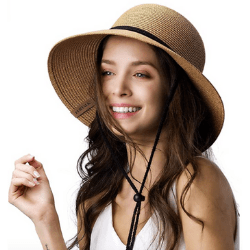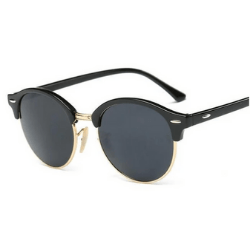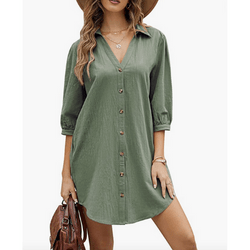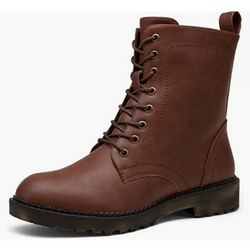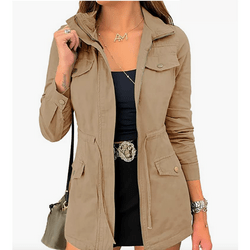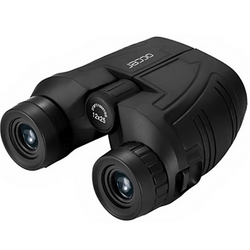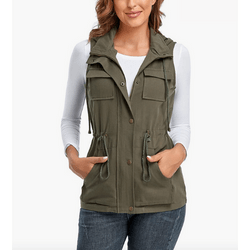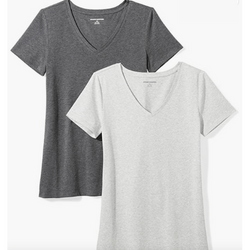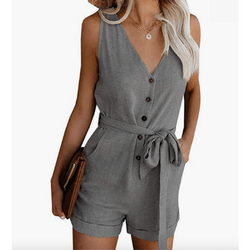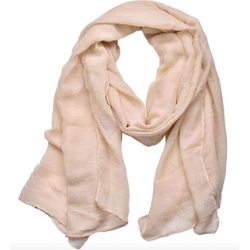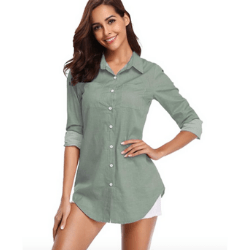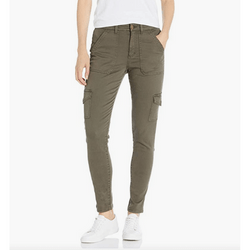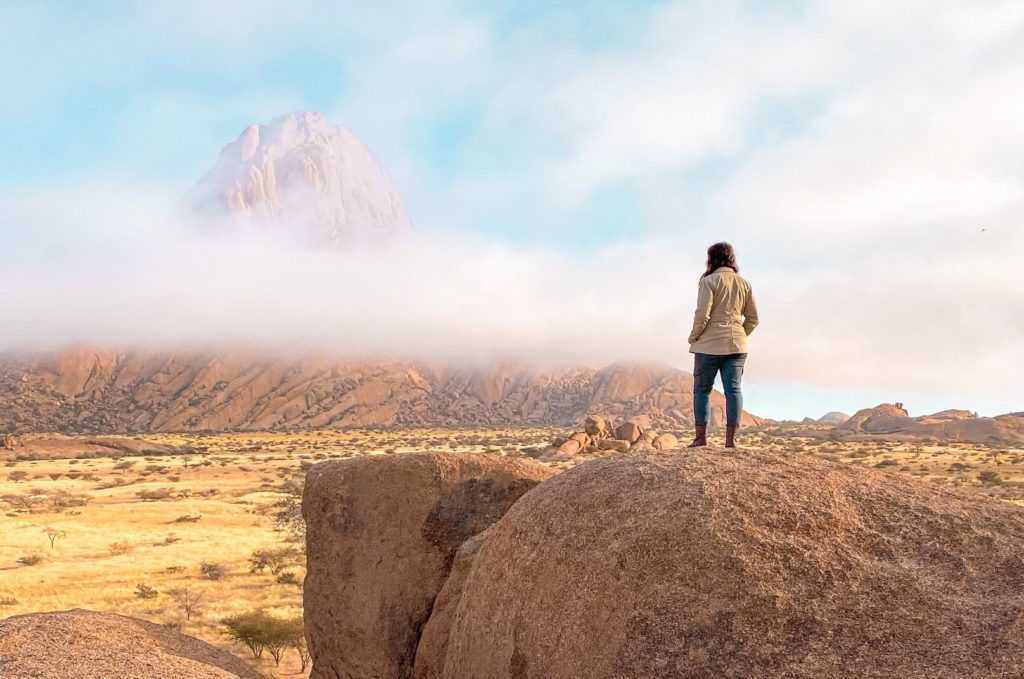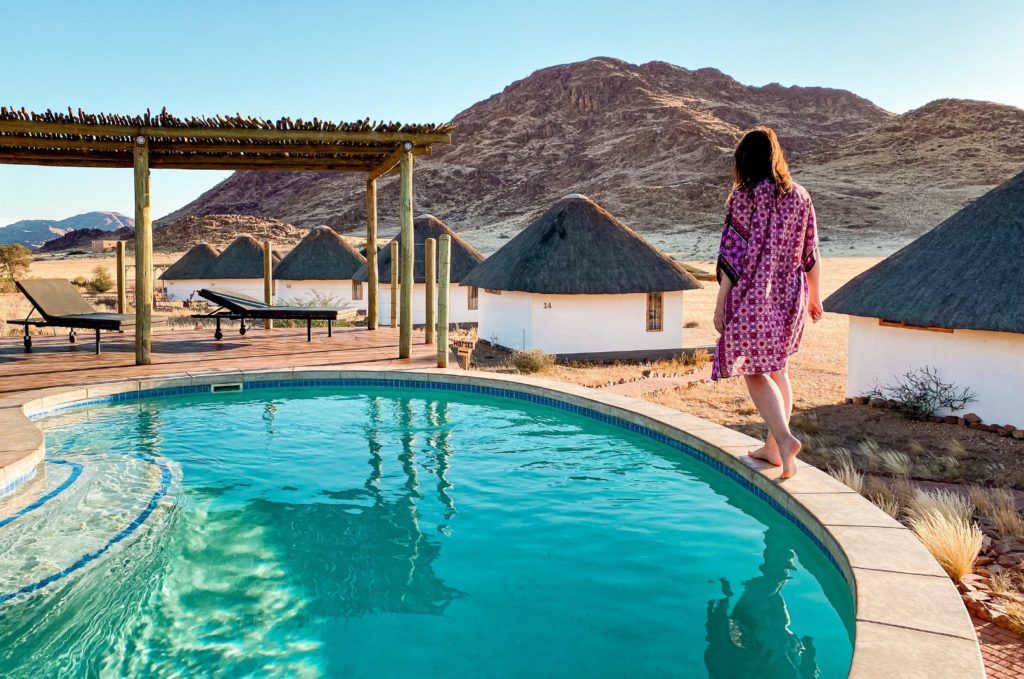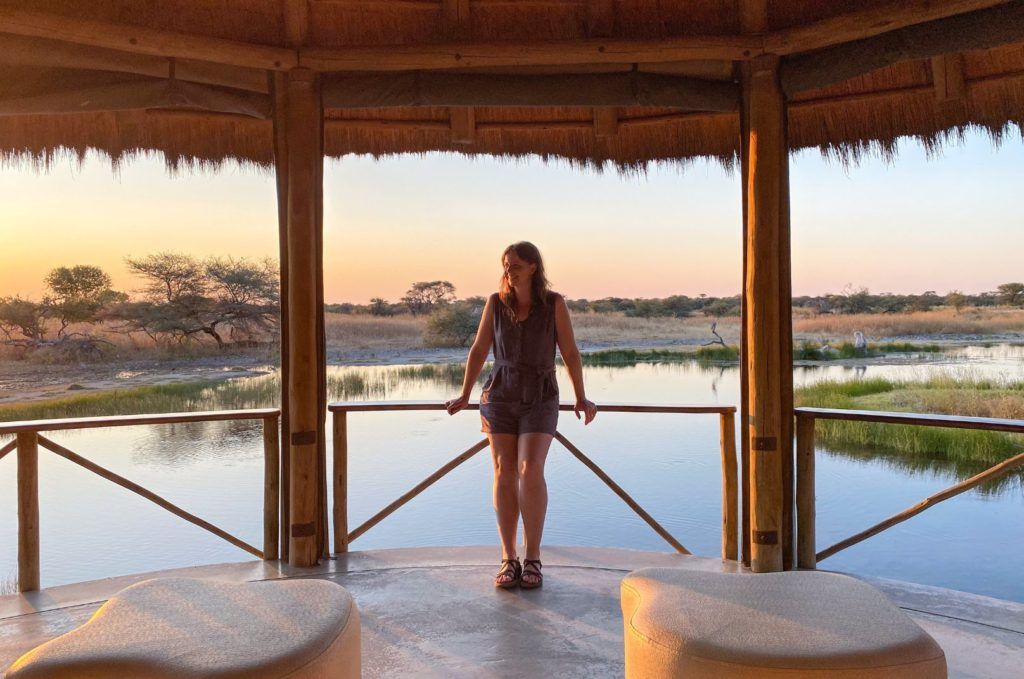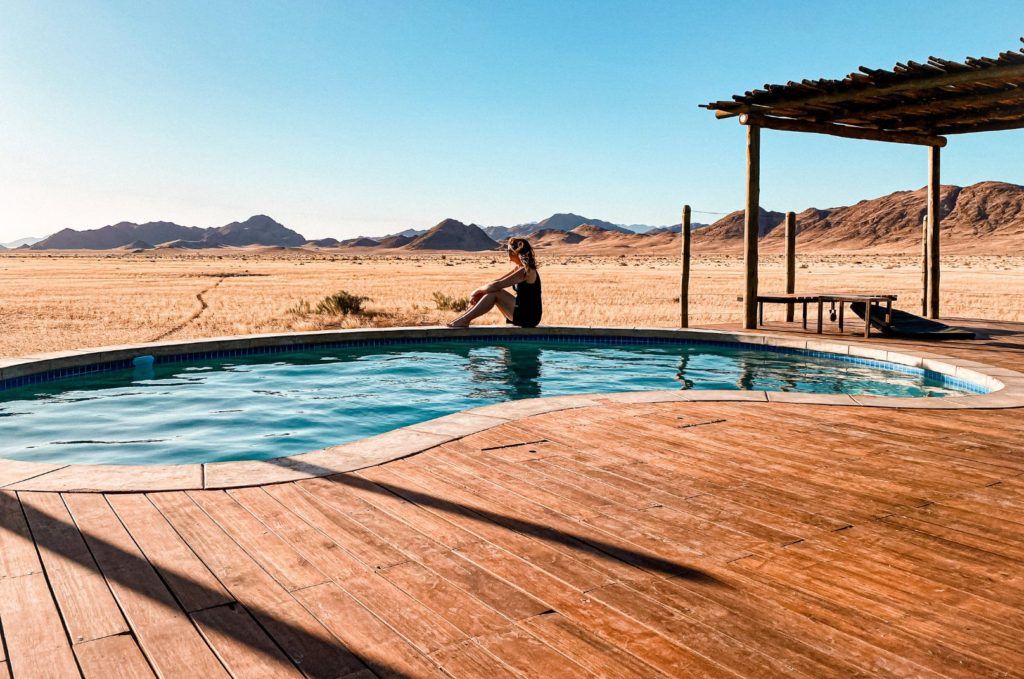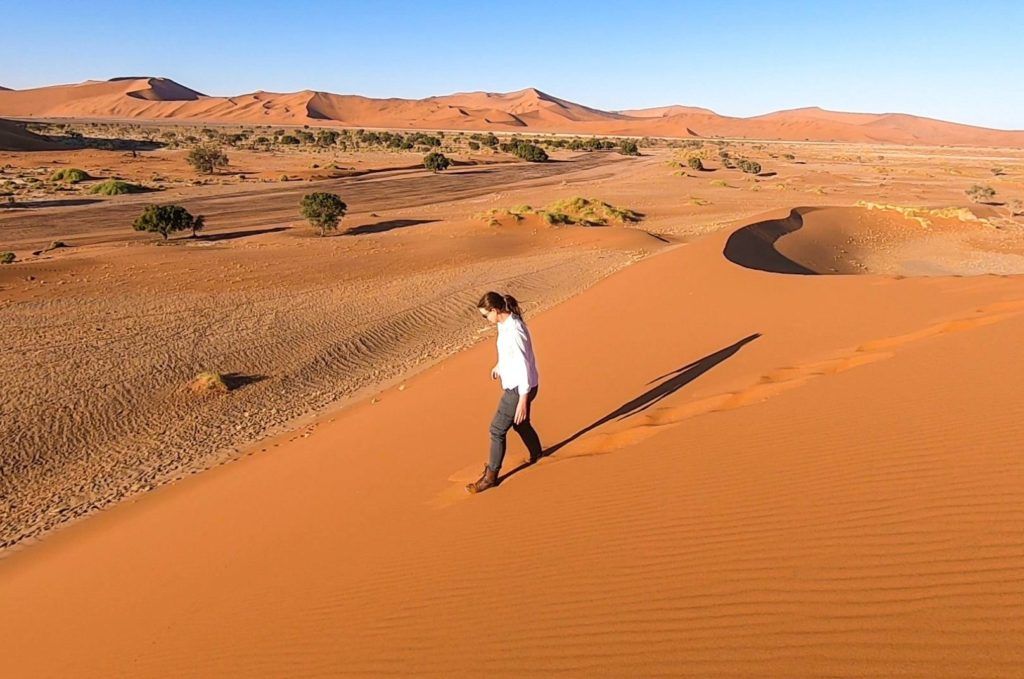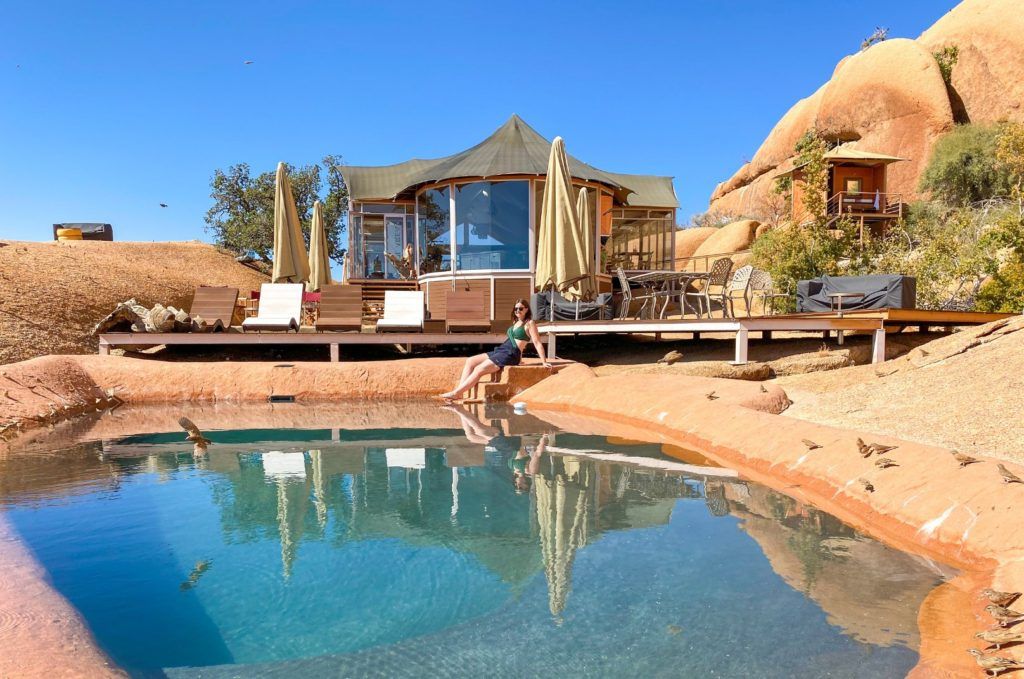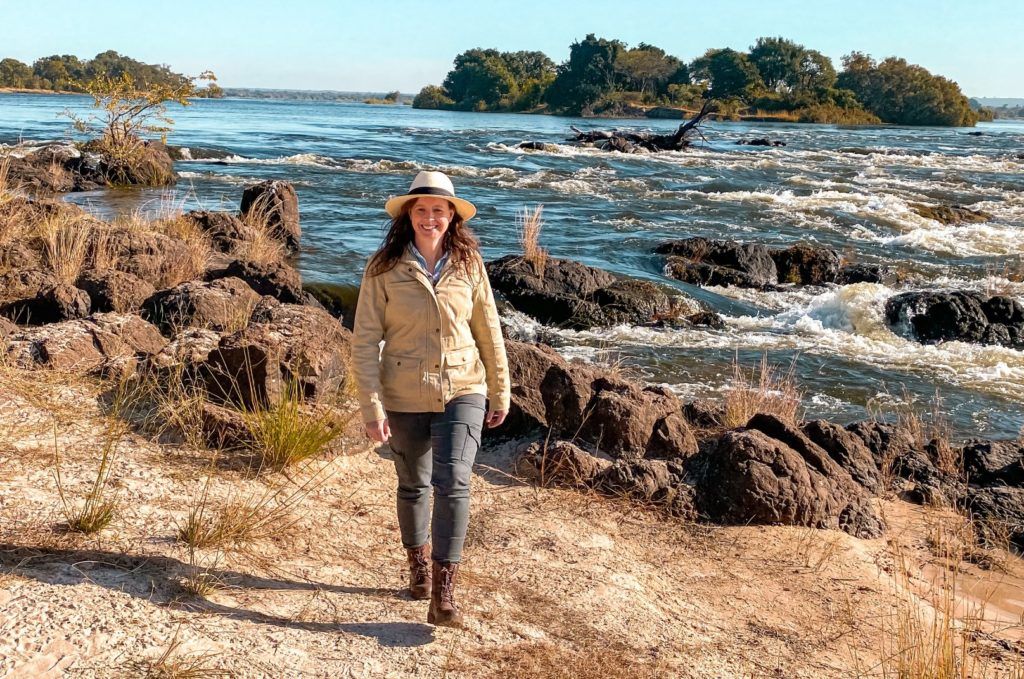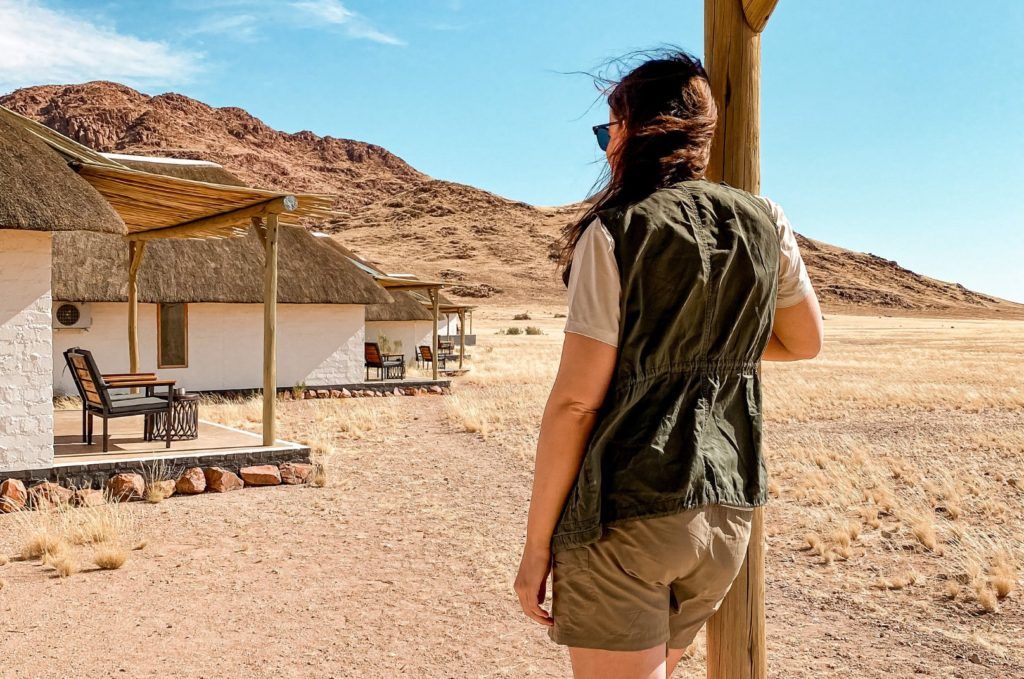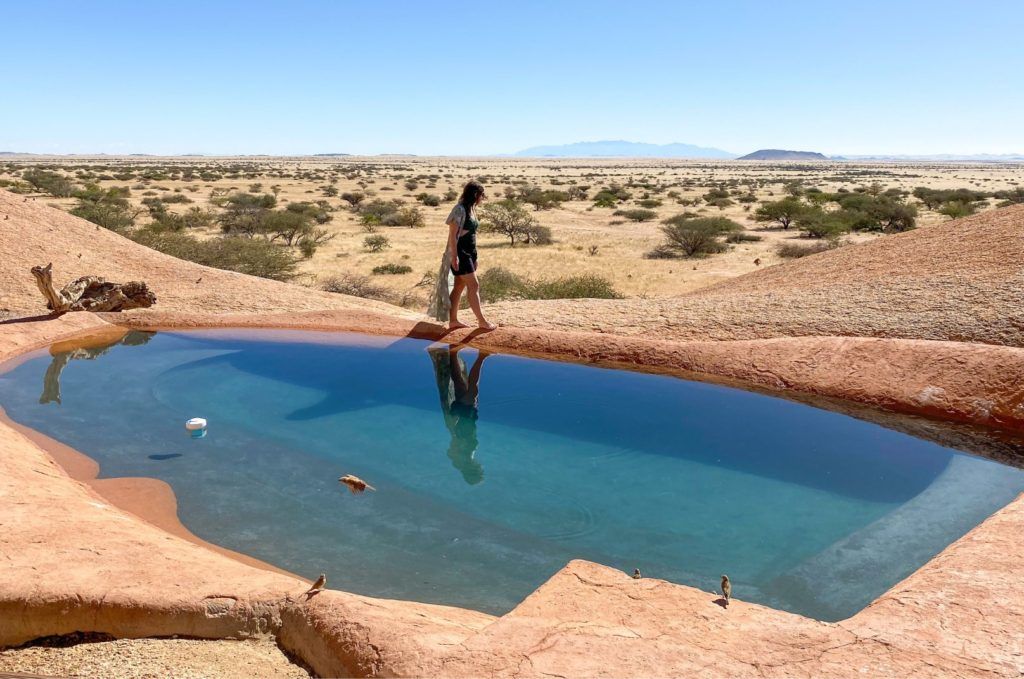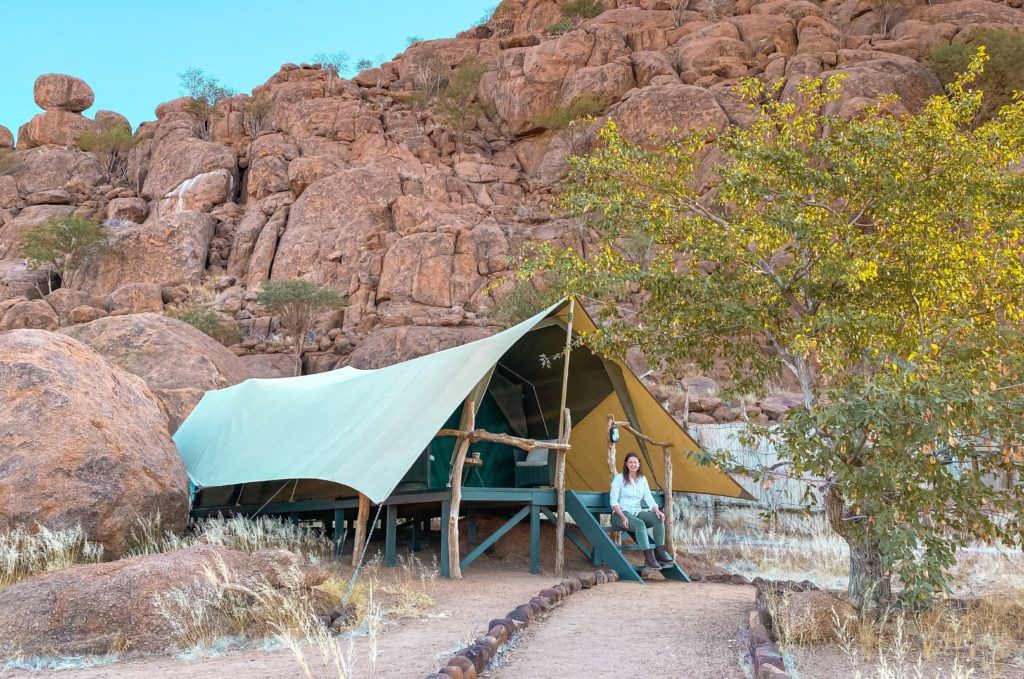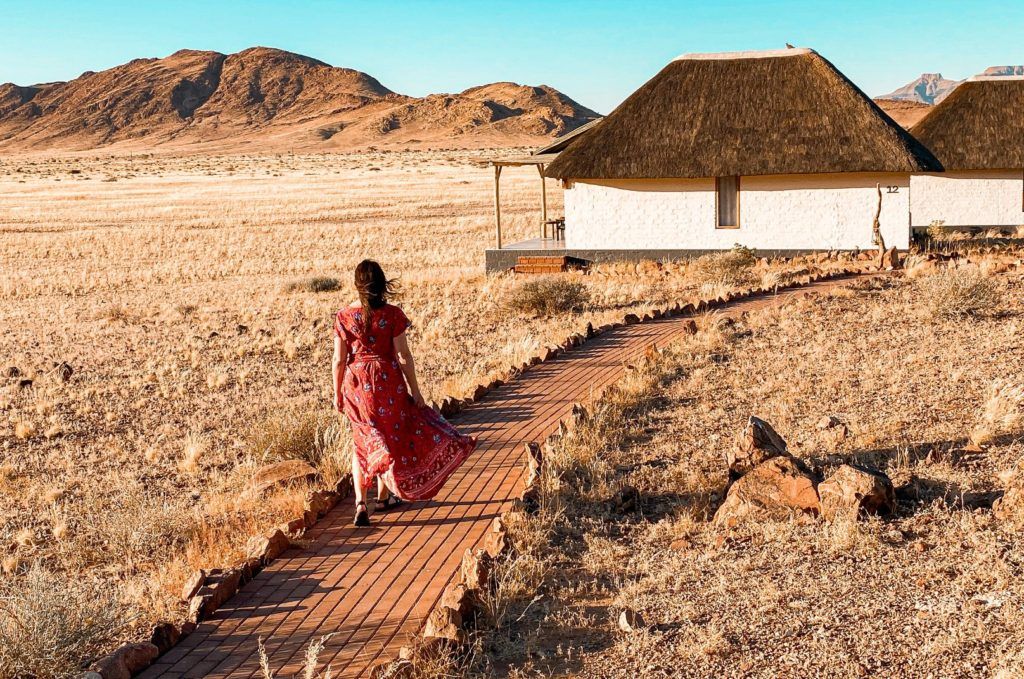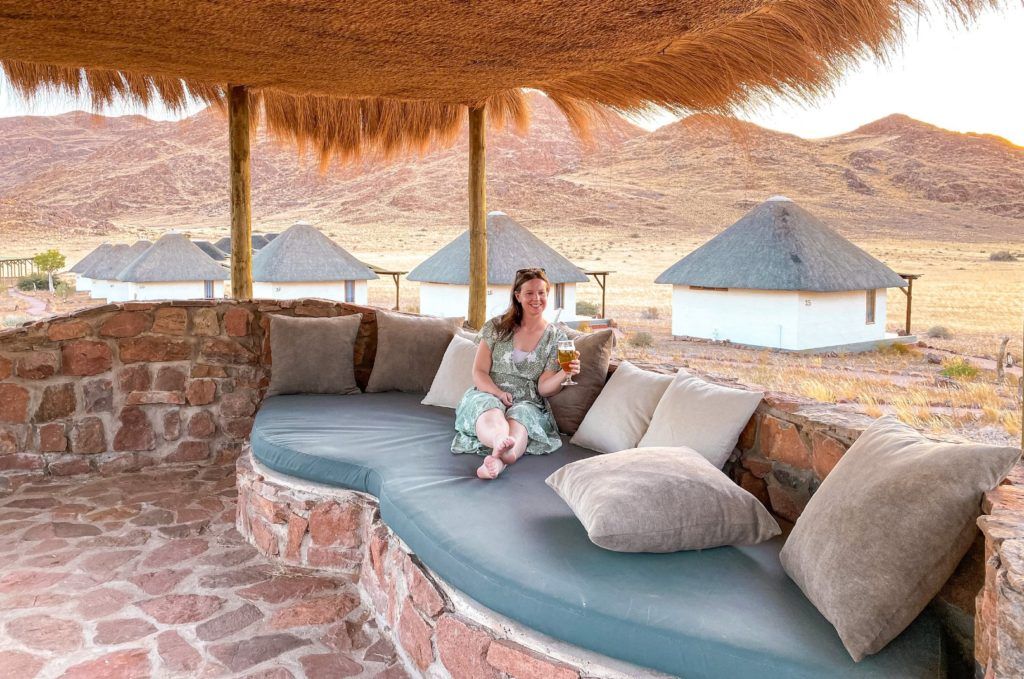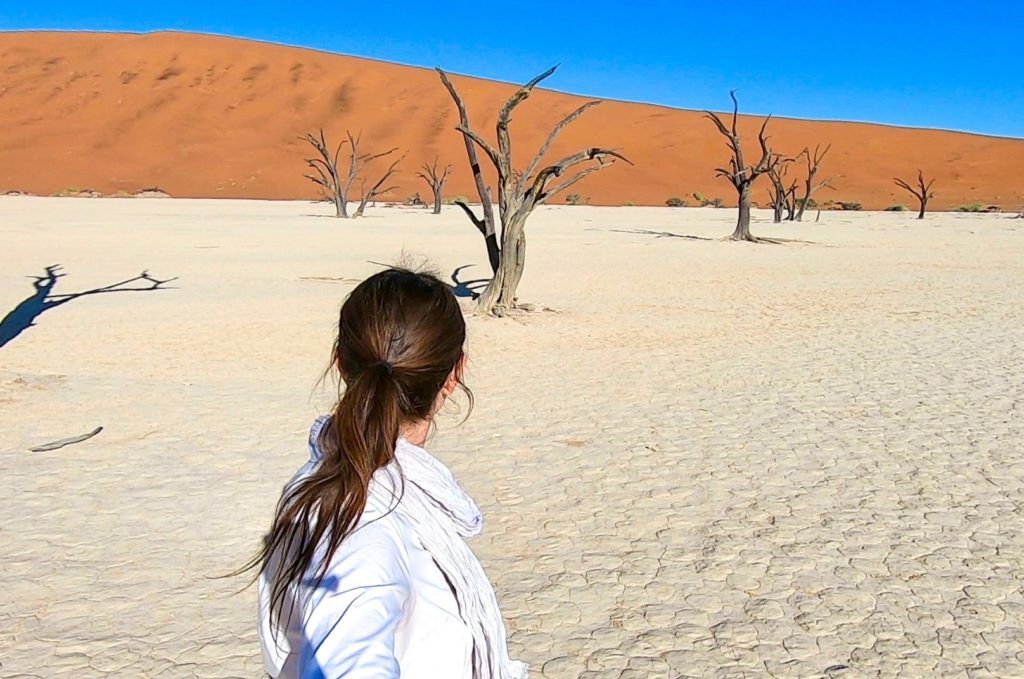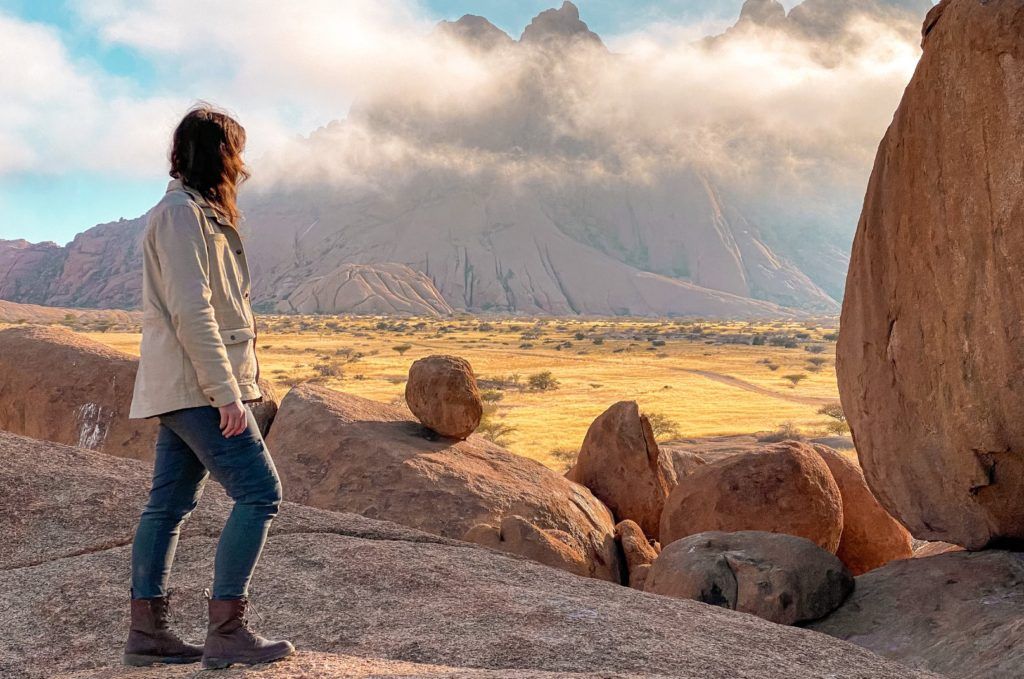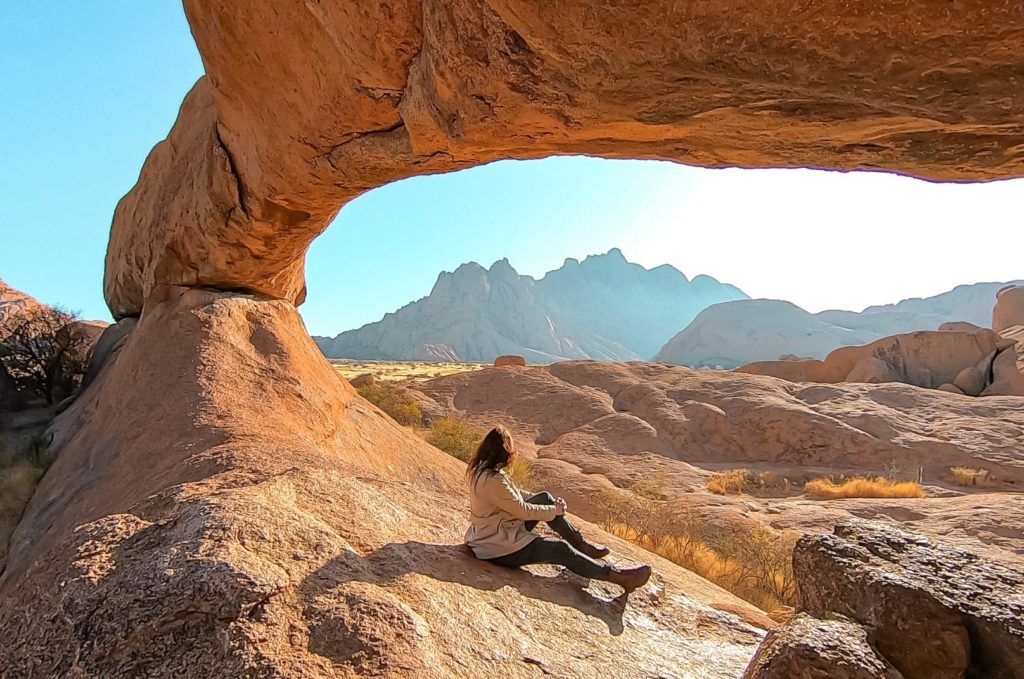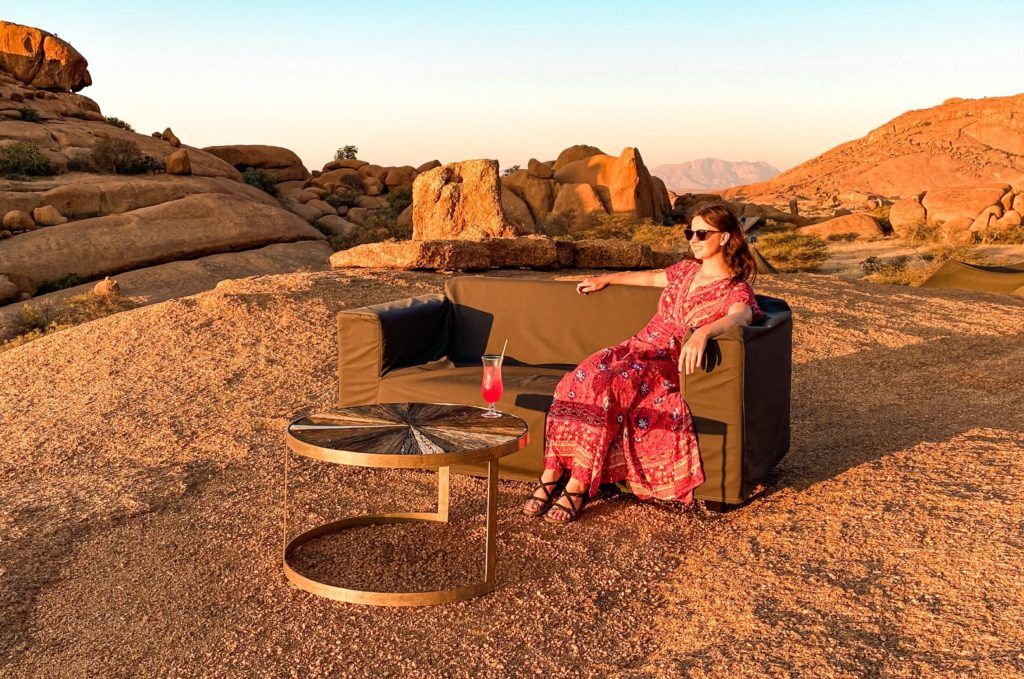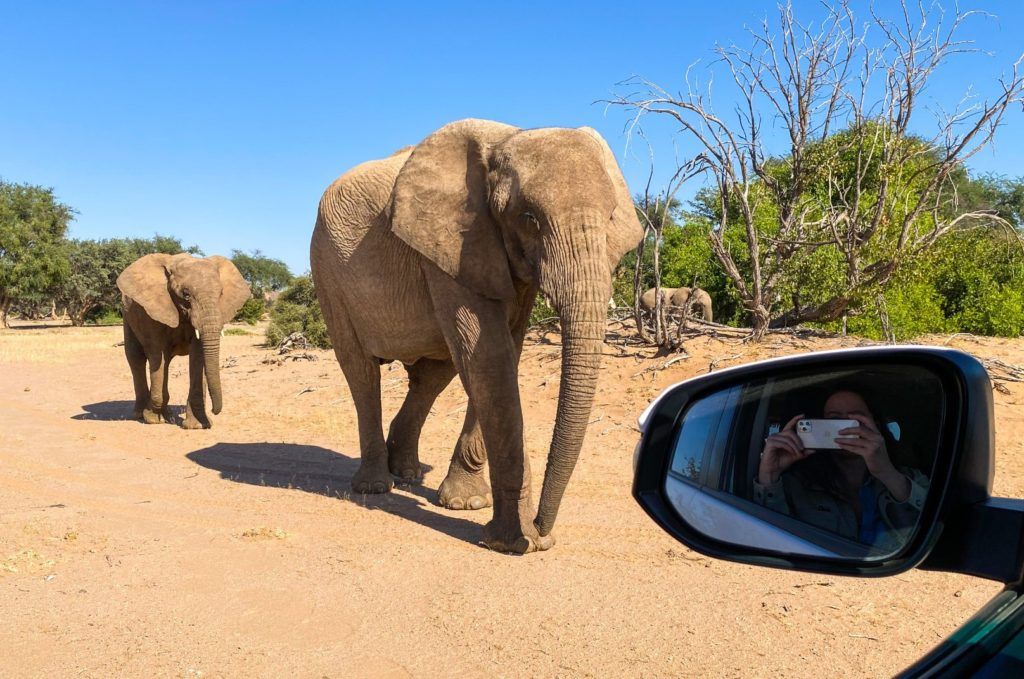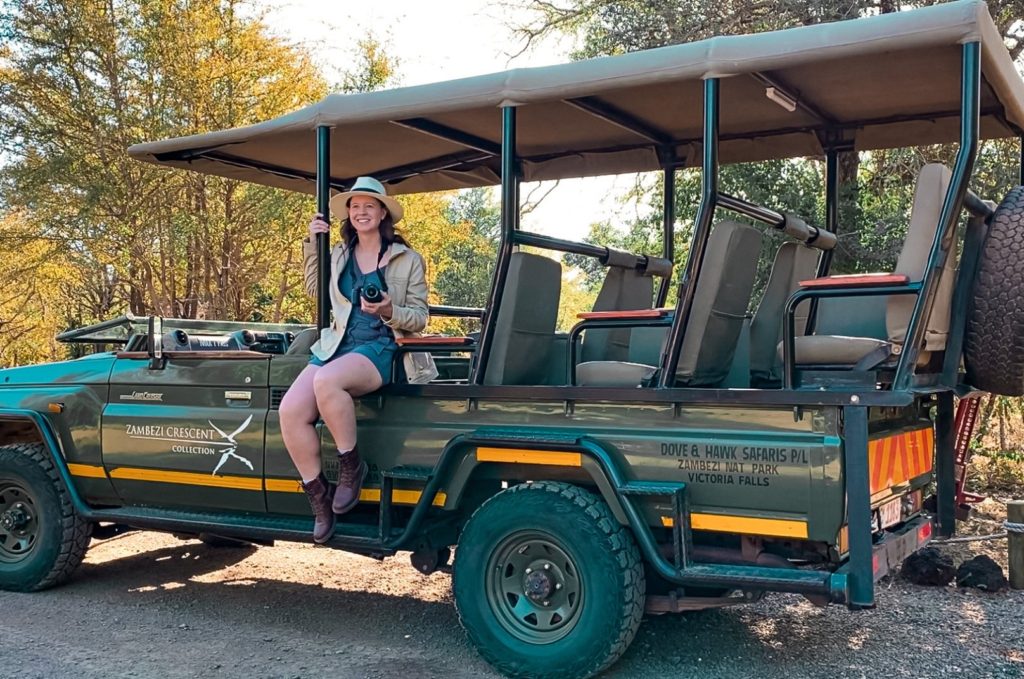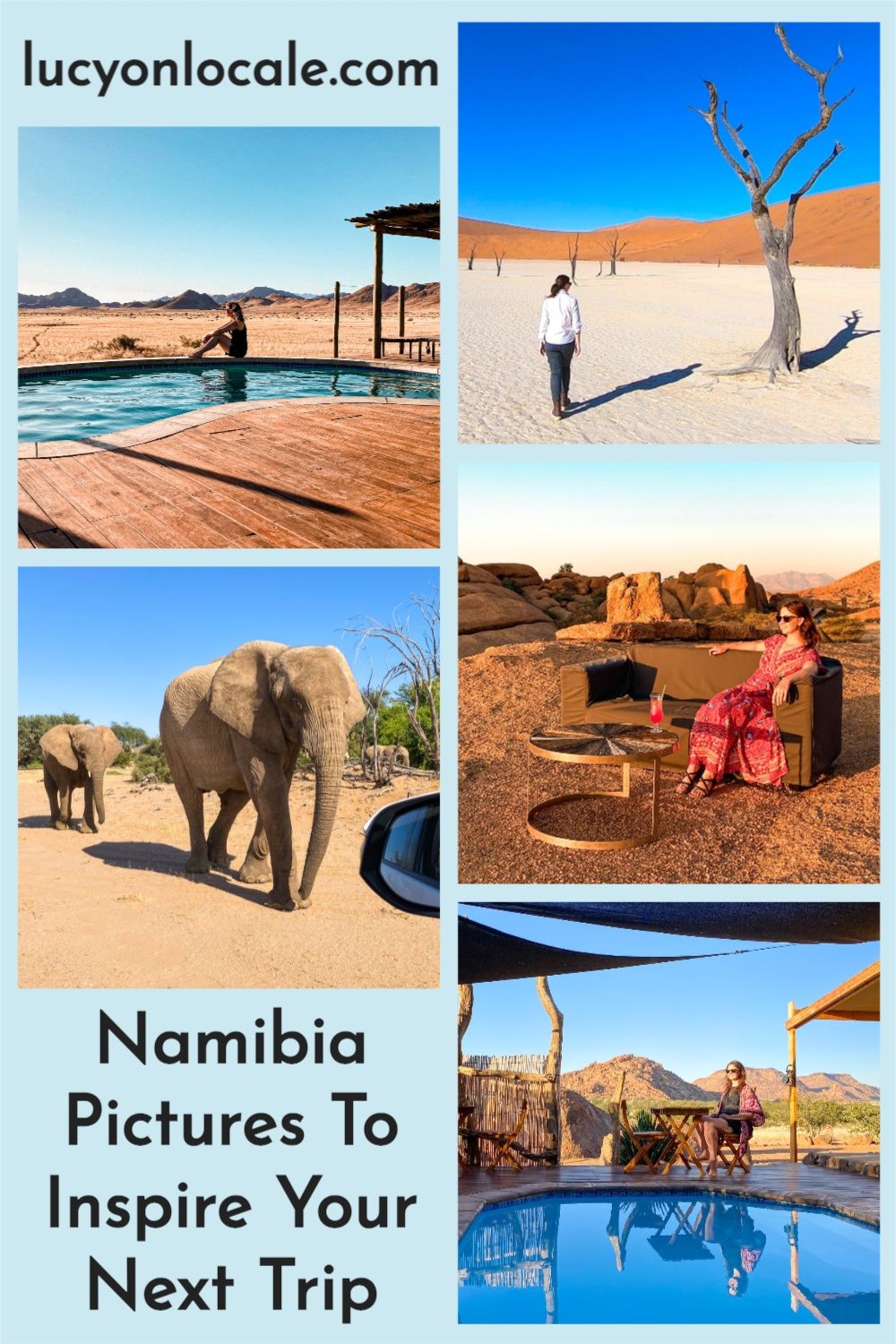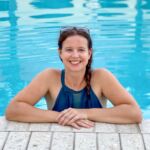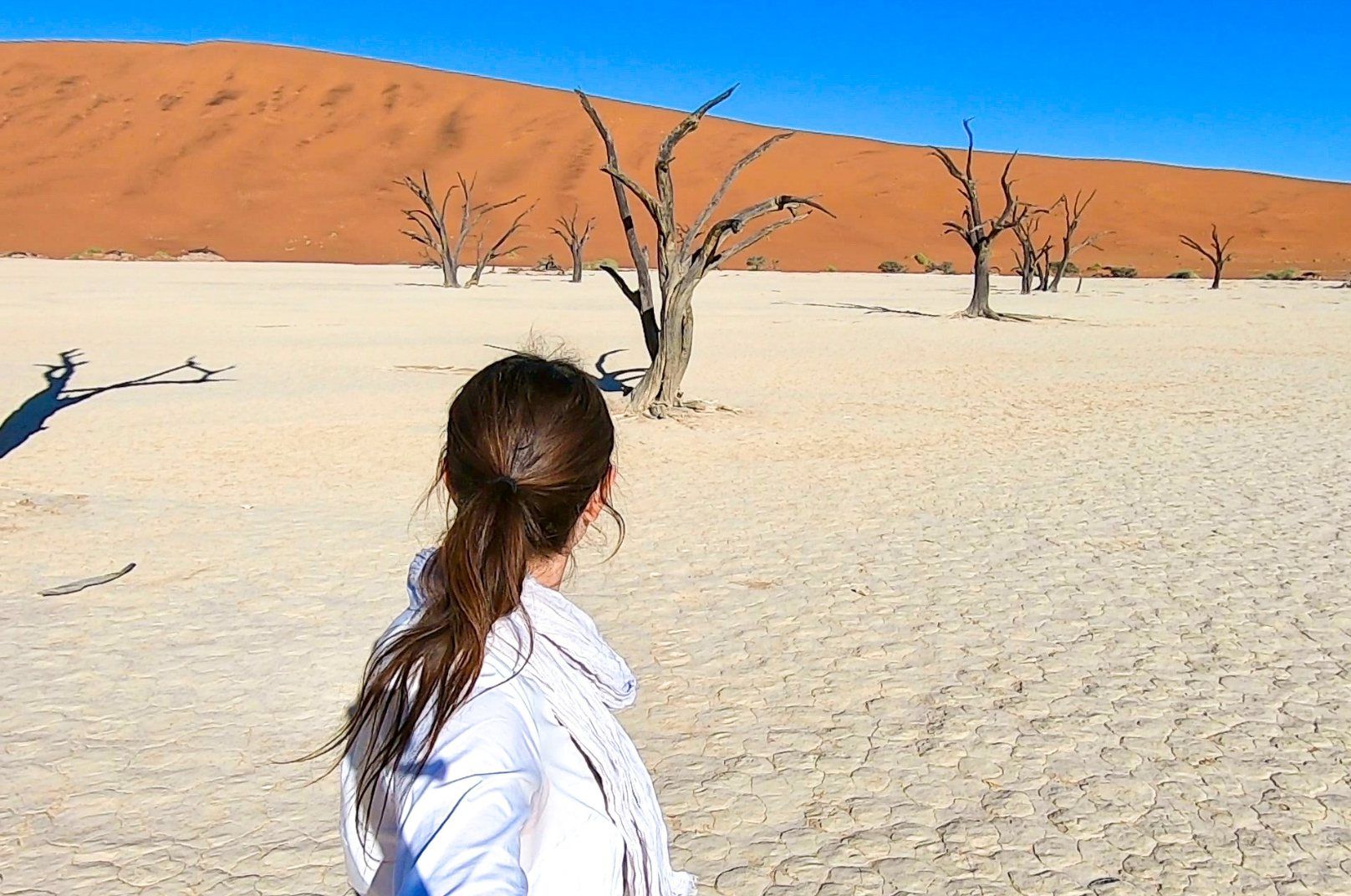
Namibia is one of the best safari destinations in the world because it’s the perfect place for adventure and relaxation. So here are some of my favorite Namibia pictures to inspire your next trip!
The Ultimate Namibia Travel Guide
On my trip to Namibia, I stayed at Desert Homestead Lodge, Twyfelfontein Adventure Camp, Spitzkoppen Lodge, and Okonjima Plains Camp, which are four of the best safari lodges in the county.
The best way to explore this destination is on a road trip to the top places to visit in Namibia.
Here are my best Namibia pictures to inspire your travel plans!

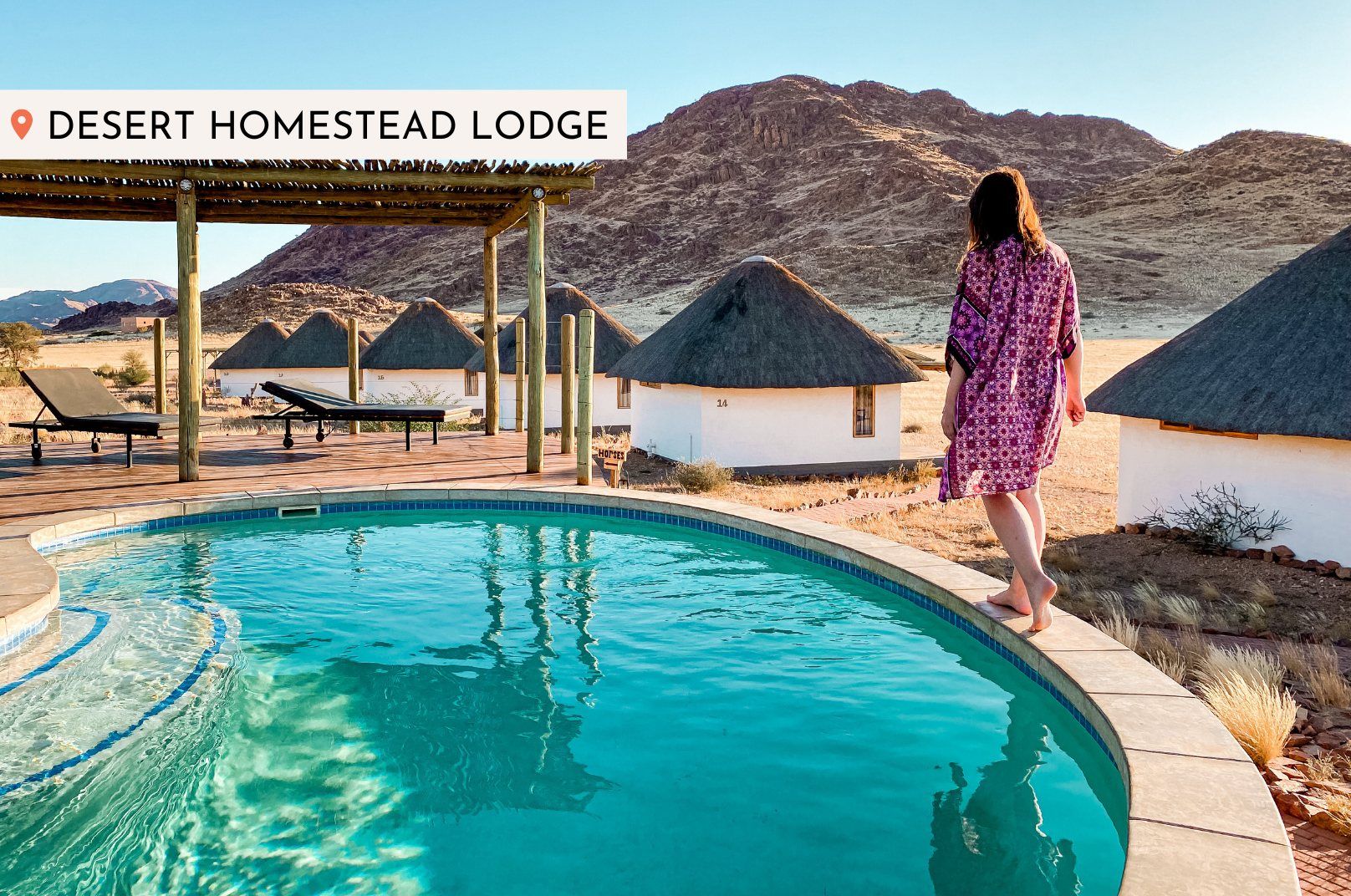
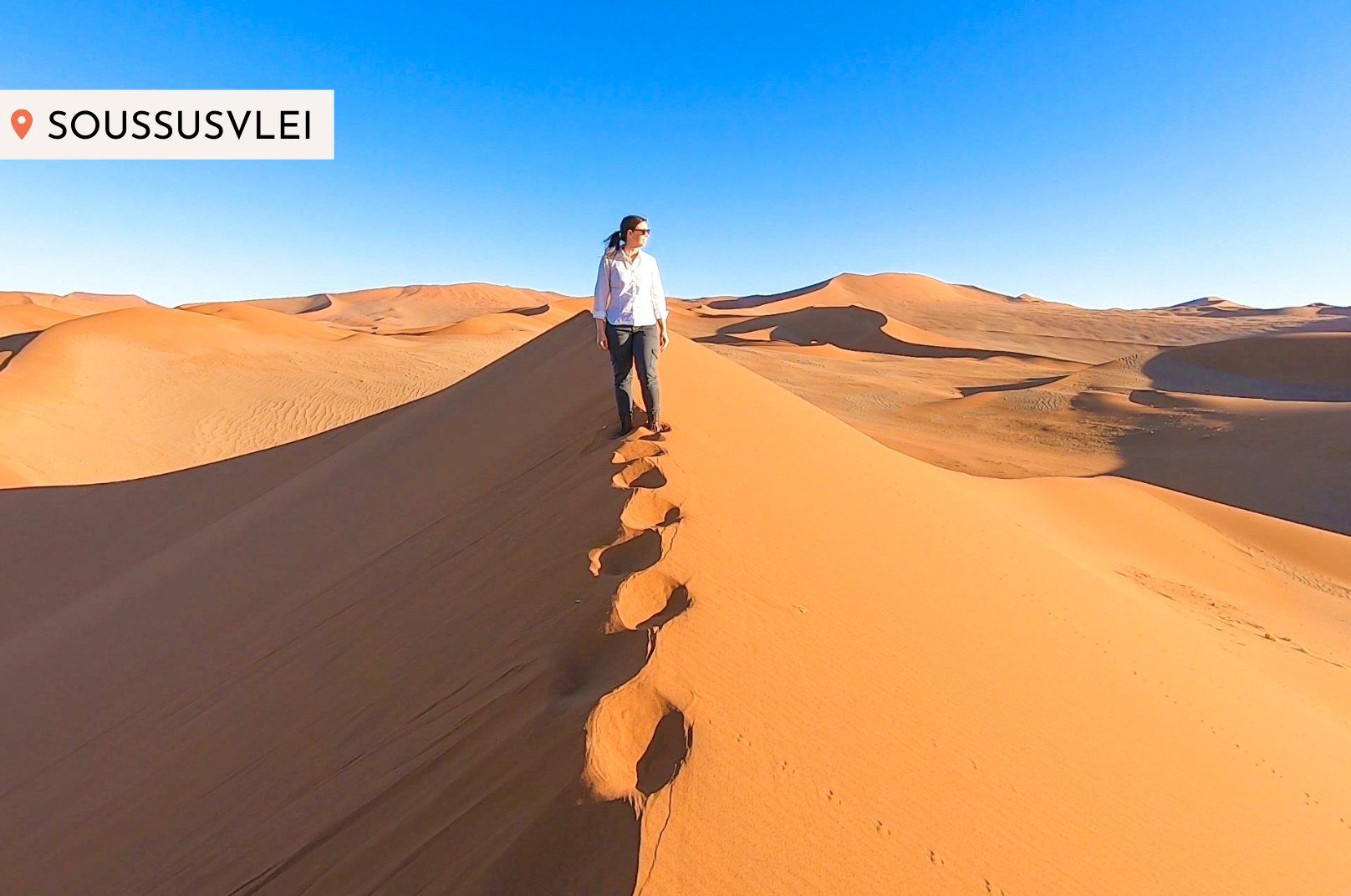
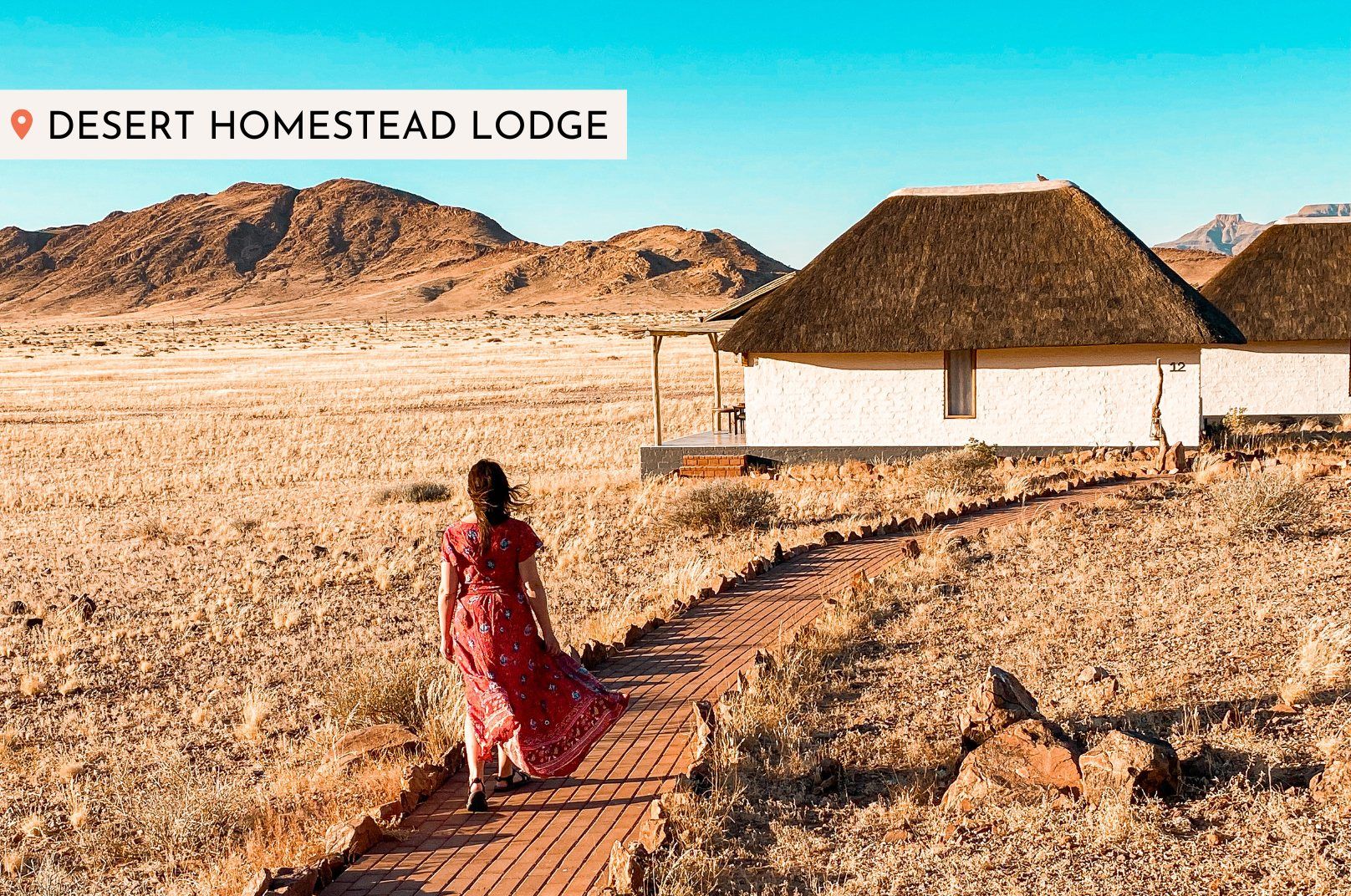


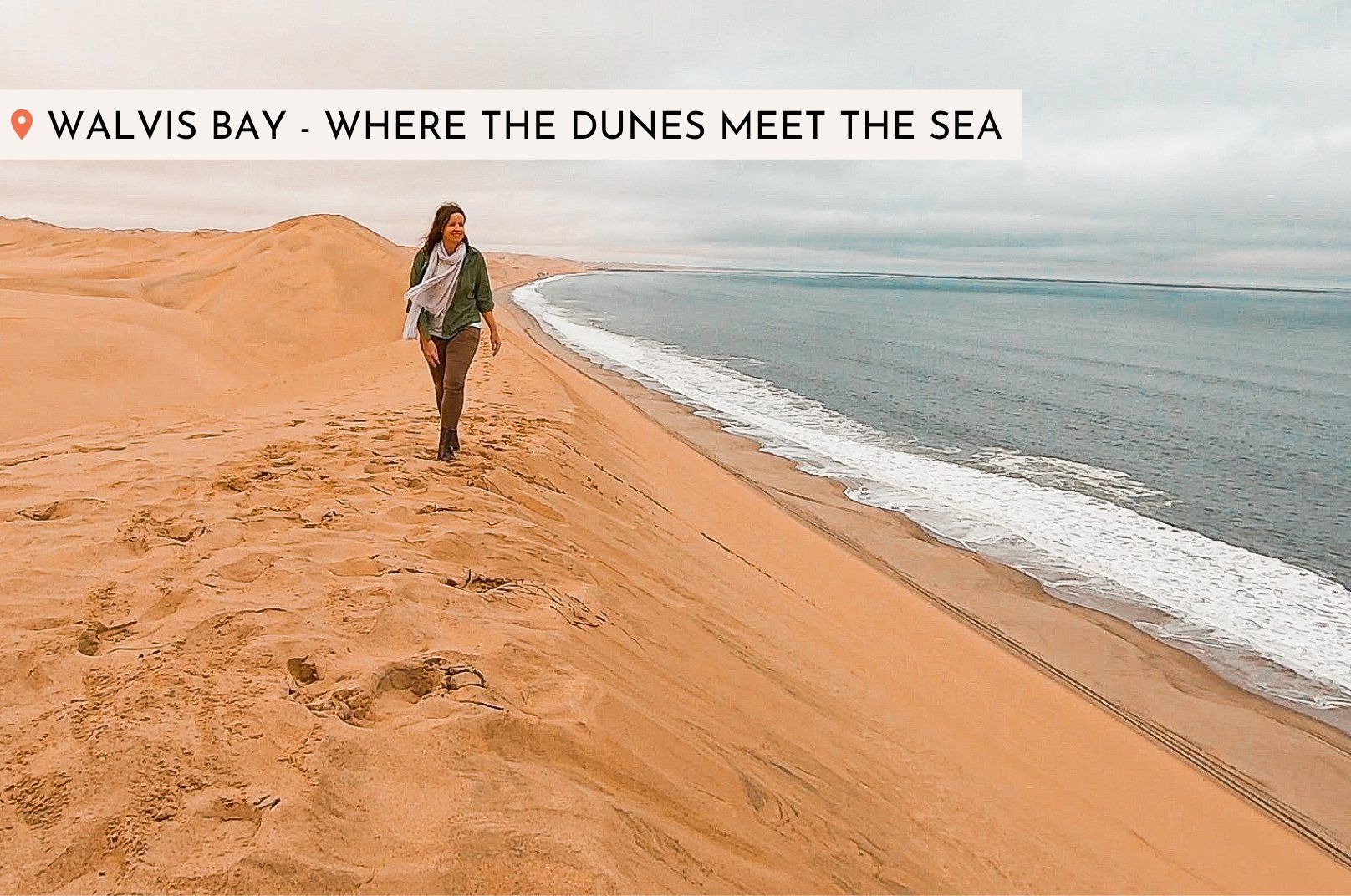
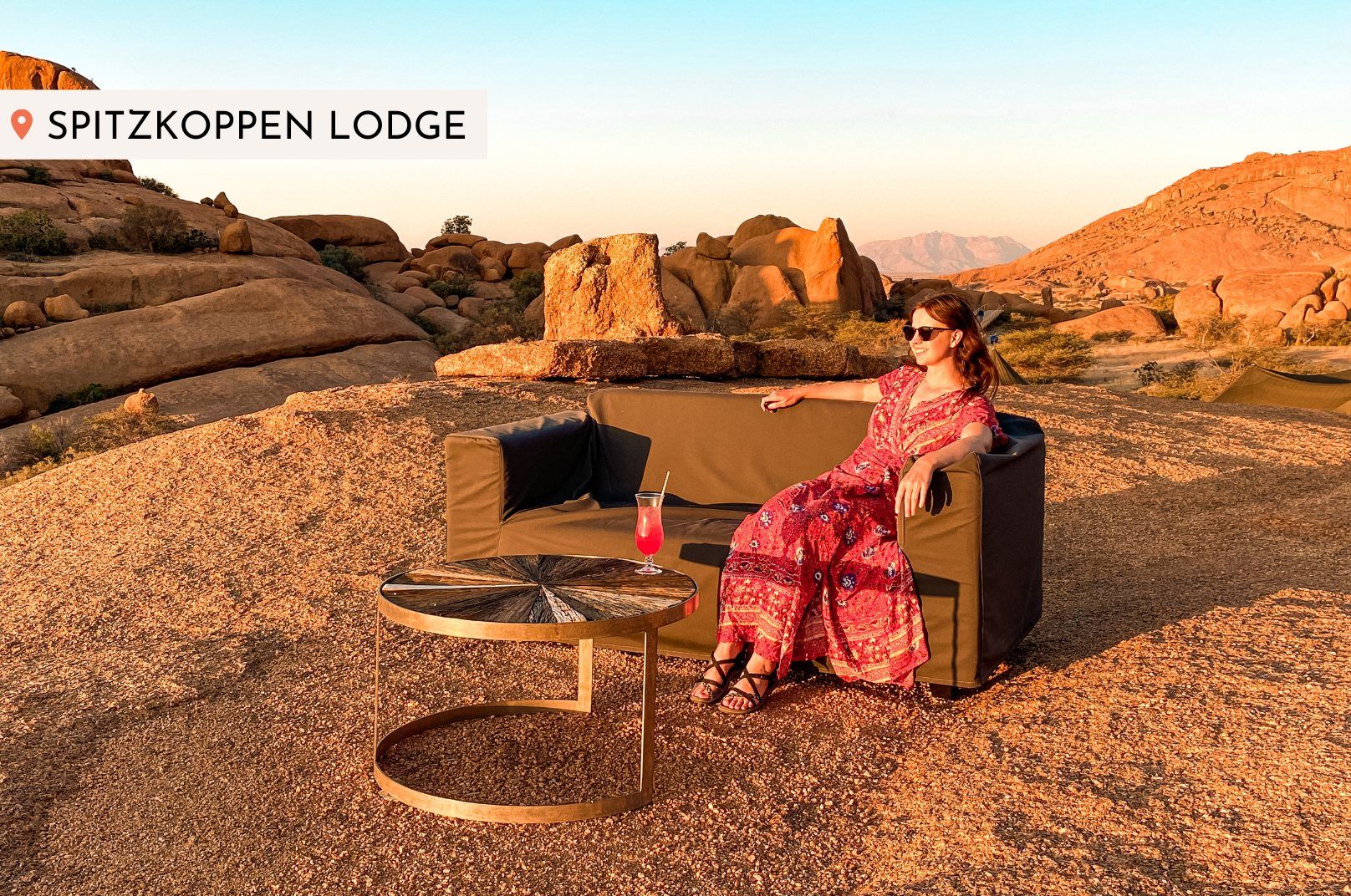
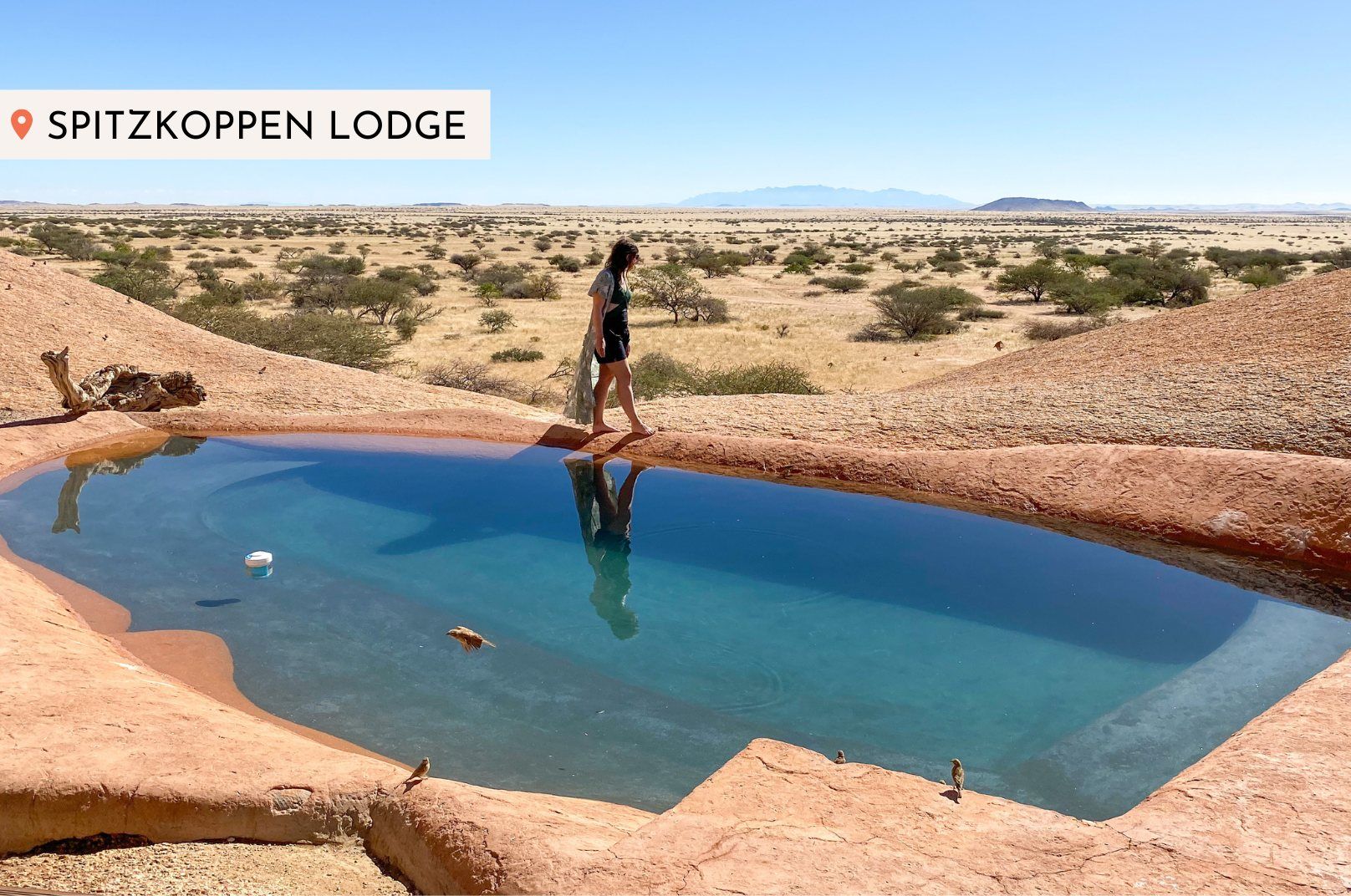
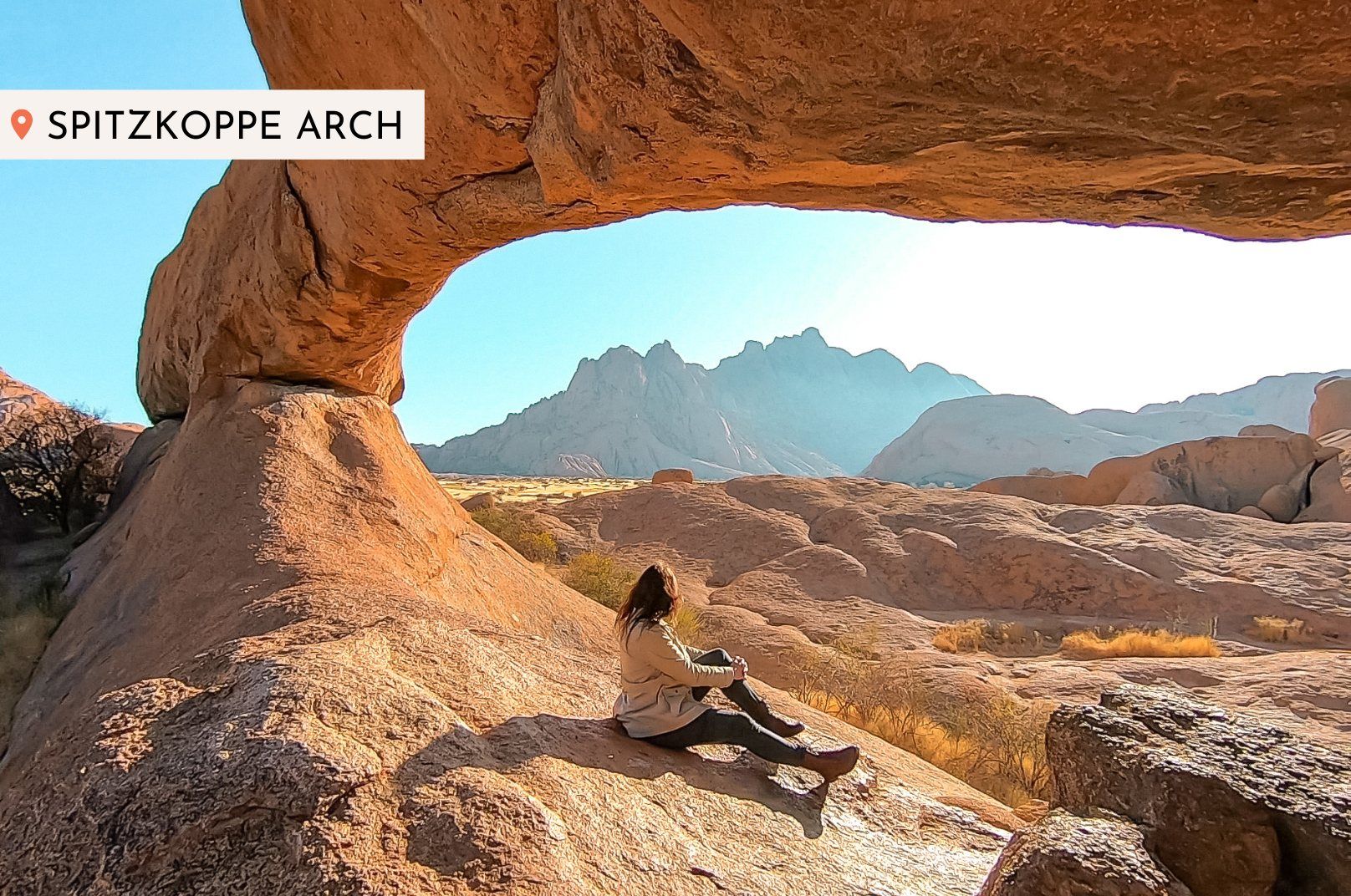
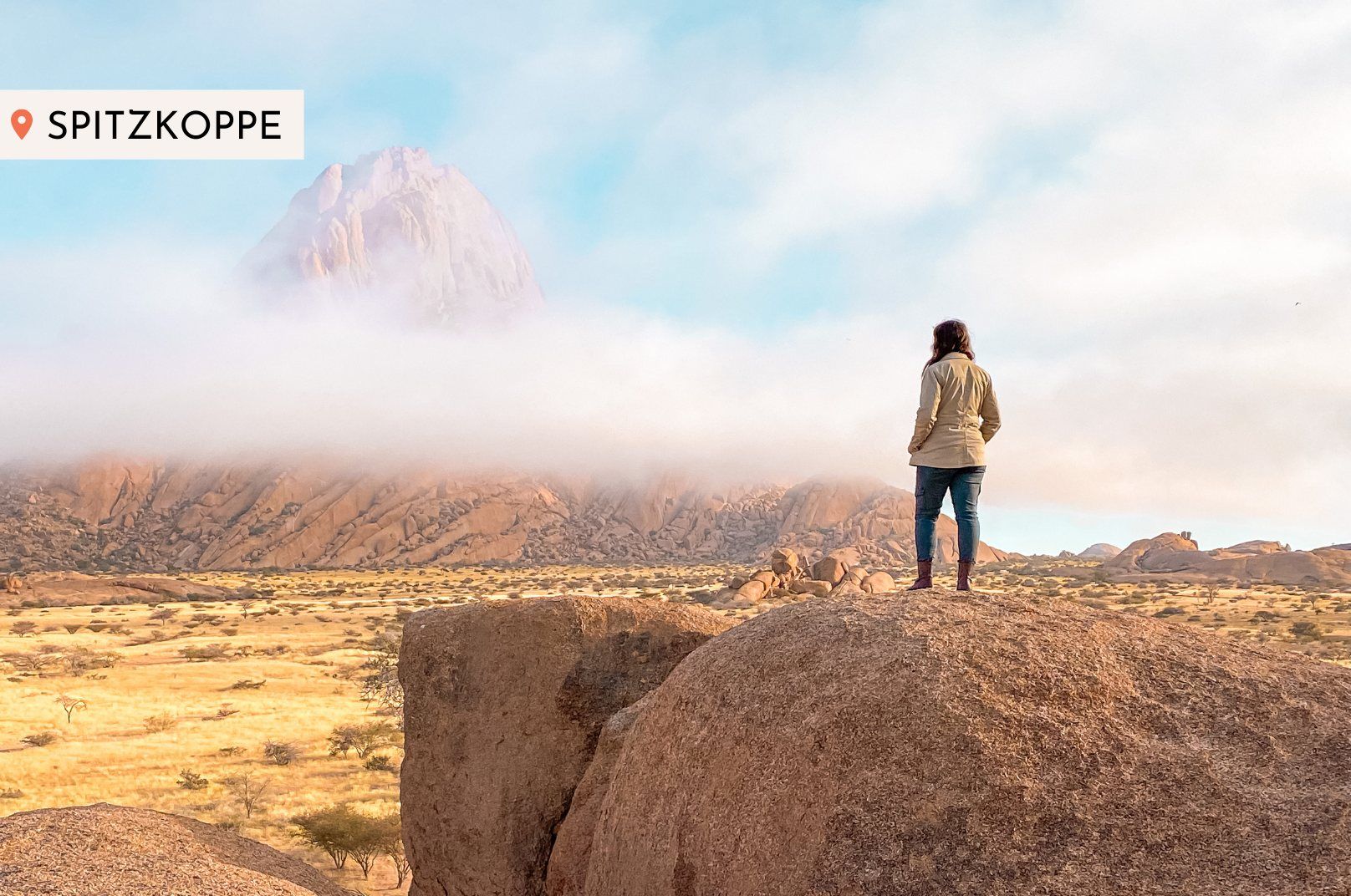
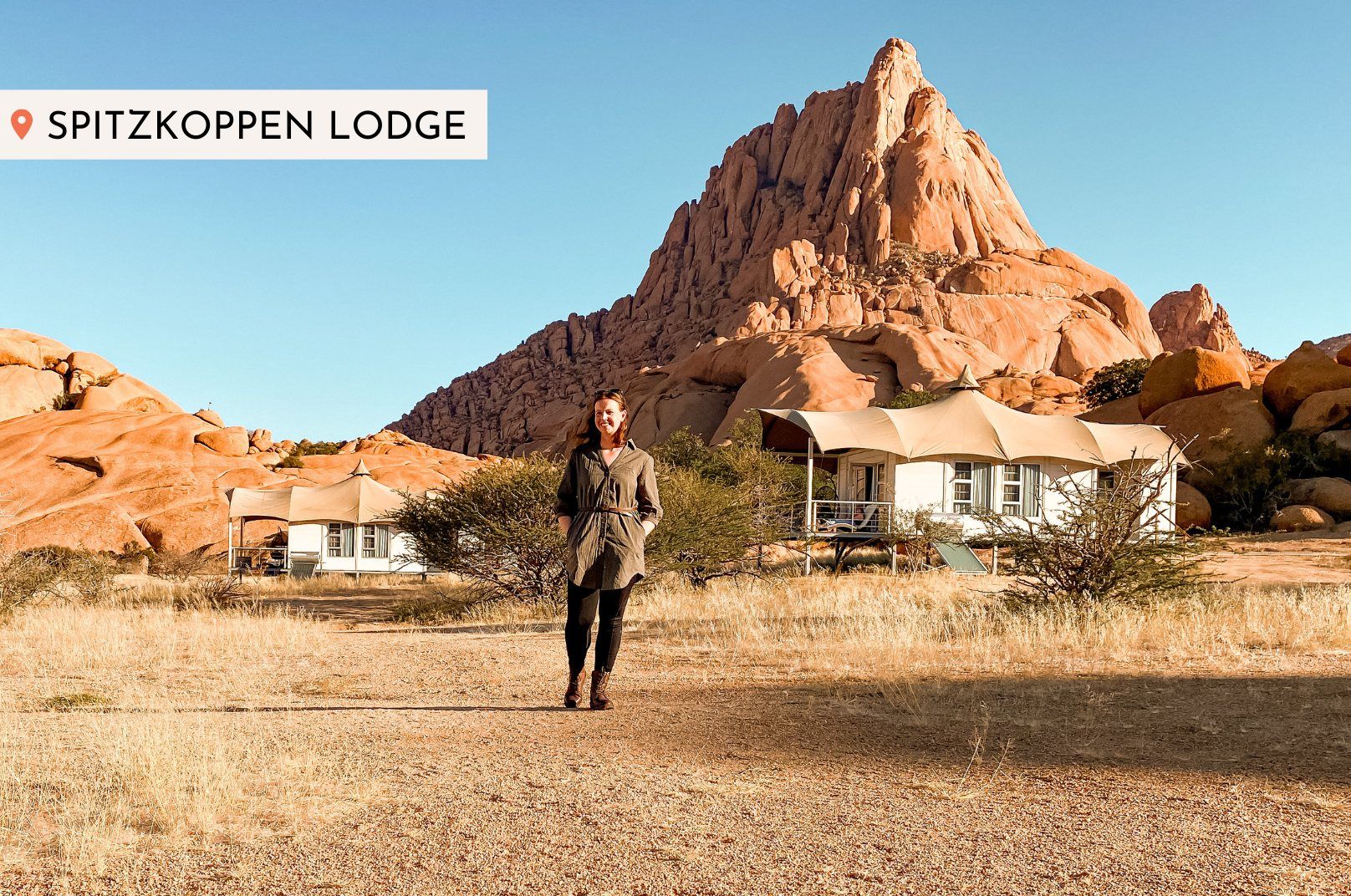
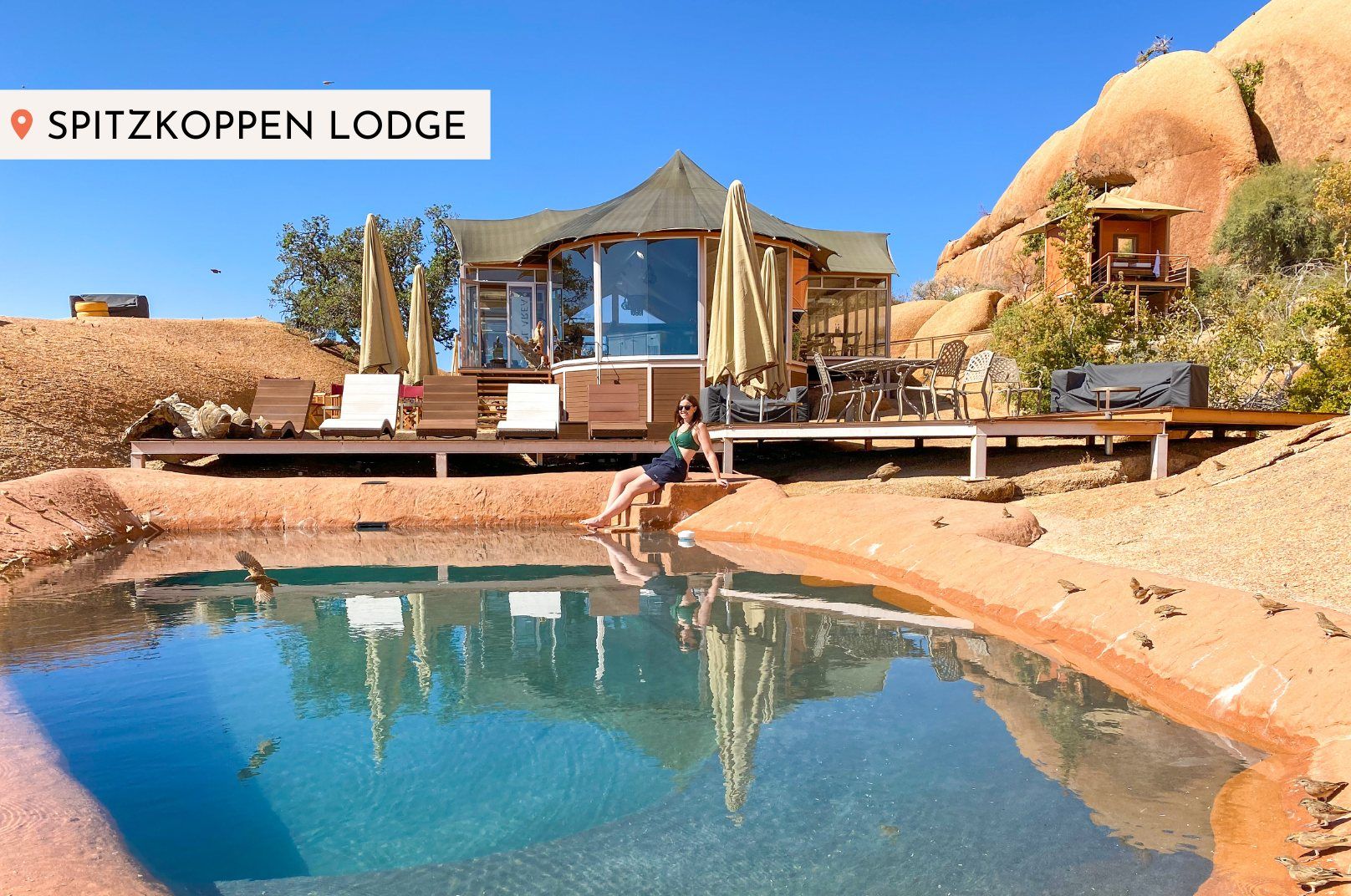
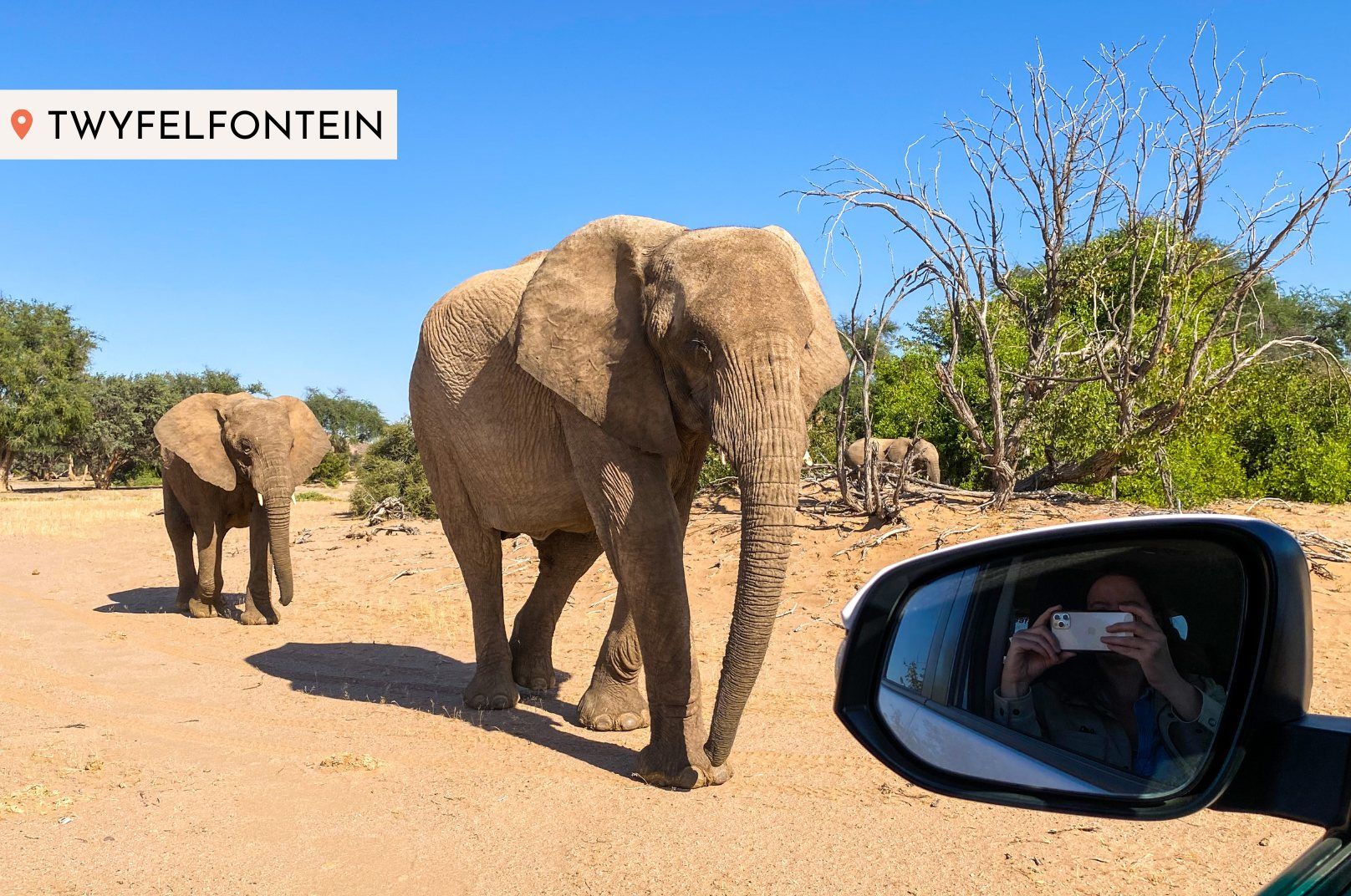
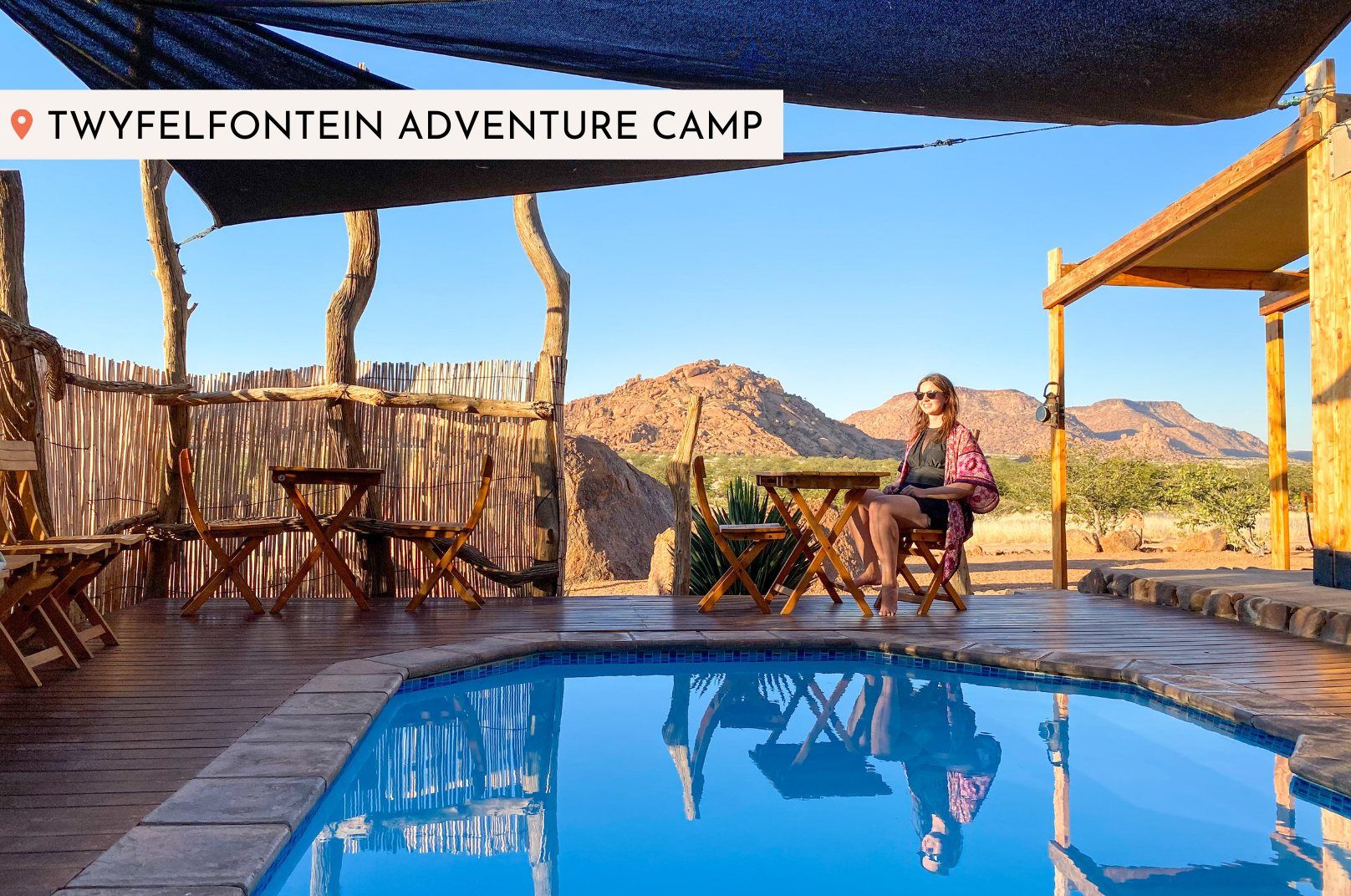

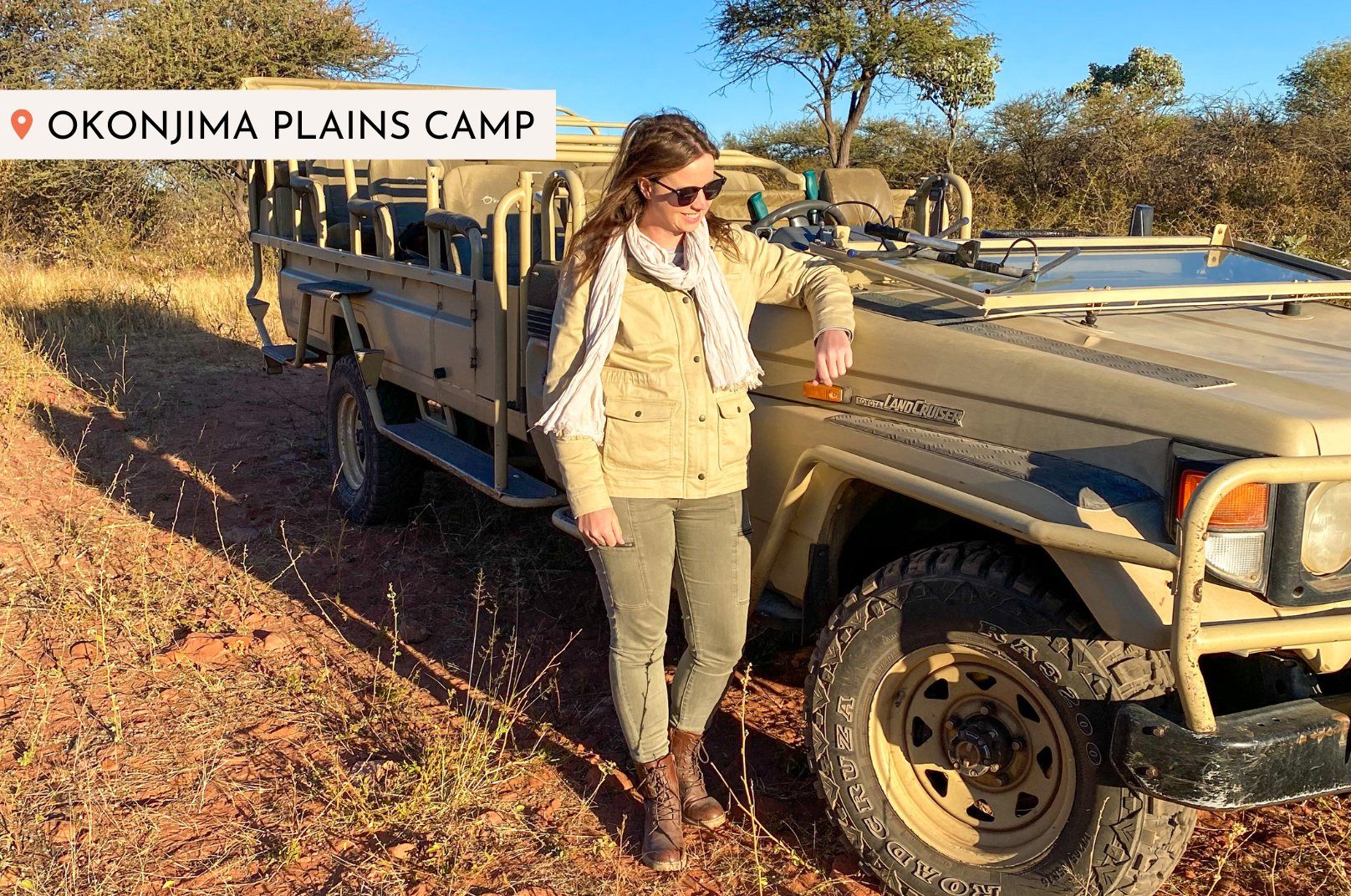

Shop My Safari Essentials

Did these Namibia pictures inspire you to visit? Share with us in the comments!

For Planning The Rest Of Your Namibia Trip

Recommended Tours in Namibia

Frequently Asked Questions
What are some fun facts about Namibia?
Etosha National Park is the top place to visit in Namibia. Namibia is home to deserts, mountains, incredible safari lodges, national parks, dreamy beach towns, and some of the best wildlife viewing in Sub-Saharan Africa. So here are more most-visit places in Namibia:
1.Sossusvlei
2. The Caprivi Strip
3. Spitzkoppe
4. Epupa Falls
5. Okonjima Nature Reserve
6. Twyfelfontein
7. Swakopmund
8. Walvis Bay
9. Skeleton Coast
Why is Namibia so special?
Namibia is home to deserts, mountains, incredible safari lodges, national parks, dreamy beach towns, and some of the best wildlife viewing in Sub-Saharan Africa. So whether you’re climbing sand dunes in Sossusvlei or tracking rhinos in Etosha National Park, this Namibia luxury safari guide has everything you need to plan an epic trip!
Fun Fact: Namibia has one of the lowest population densities in the world, which means this is one of the best destinations to escape the crowds.
When To Go:
Namibia is a desert country – one of the driest places in Sub-Saharan Africa. July – October are the driest months of the year and the peak travel season. Wildlife will gather by the hundreds around water holes, meaning these months have some of the best game viewings anywhere in Africa. These months have the highest prices and crowds, so book your lodge and tours as far in advance as possible. In July and August, daytime temperatures average in the 60s and 70s, and nighttime temperatures can drop below freezing, so bring layers. September and October nights are warmer, but you’ll still want a jacket.
May and June are the shoulder months. The rains will have stopped, the landscape will be lush, and wildlife will be easily visible at waterholes (though not as high a concentration as in July – October). Travel costs will be less during these months, and the safari lodges and destinations won’t be overrun with tourists. Daytime temperatures range from the 60s to 80s, with nighttime temperatures falling below freezing in June, so bring layers for the mornings and evenings.
November, February, and March are the rainy and off-season months. It will be wet and humid, and wildlife will be hard to see because they won’t need to gather at watering holes. You can score some great accommodation deals during these months, though, and it can feel like you have the entire country to yourself.
December, January, and April are the best months for bird watching. These are the months directly after the rainy months, when the weather will be drier, the skies clearer, and the feeding conditions are ideal for water birds. These months have drastic temperature changes from night to day, so bring shorts, pants, short-sleeve shirts, and jackets.
Is Namibia a famous country?
Etosha National Park is the top place to visit in Namibia. Namibia is home to deserts, mountains, incredible safari lodges, national parks, dreamy beach towns, and some of the best wildlife viewing in Sub-Saharan Africa. So here are more most-visit places in Namibia:
1.Sossusvlei
2. The Caprivi Strip
3. Spitzkoppe
4. Epupa Falls
5. Okonjima Nature Reserve
6. Twyfelfontein
7. Swakopmund
8. Walvis Bay
9. Skeleton Coast
What is the capital of Namibia?
Windhoek.
Etosha National Park is the top place to visit in Namibia. Namibia is home to deserts, mountains, incredible safari lodges, national parks, dreamy beach towns, and some of the best wildlife viewing in Sub-Saharan Africa. So here are more most-visit places in Namibia:
1.Sossusvlei
2. The Caprivi Strip
3. Spitzkoppe
4. Epupa Falls
5. Okonjima Nature Reserve
6. Twyfelfontein
7. Swakopmund
8. Walvis Bay
9. Skeleton Coast
How safe is Namibia travel?
I felt very safe during my entire trip to Namibia. But, as with any destination, you need to take precautions to keep yourself safe. Don’t walk by yourself at night, stay in a secure and well-located hotel or vacation home, use slash-proof, lockable, and RFID-protected bags and purses, and always have a charged cell phone and GPS with you.
Why do tourists travel to Namibia?
If you only have a week in Namibia, I recommend spending two nights in Sossusvlei, two nights in Spitzkoppe, and three nights in Etosha National Park.
When To Go:
Namibia is a desert country – one of the driest places in Sub-Saharan Africa. July – October are the driest months of the year and the peak travel season. Wildlife will gather by the hundreds around water holes, meaning these months have some of the best game viewings anywhere in Africa. These months have the highest prices and crowds, so book your lodge and tours as far in advance as possible. In July and August, daytime temperatures average in the 60s and 70s, and nighttime temperatures can drop below freezing, so bring layers. September and October nights are warmer, but you’ll still want a jacket.
May and June are the shoulder months. The rains will have stopped, the landscape will be lush, and wildlife will be easily visible at waterholes (though not as high a concentration as in July – October). Travel costs will be less during these months, and the safari lodges and destinations won’t be overrun with tourists. Daytime temperatures range from the 60s to 80s, with nighttime temperatures falling below freezing in June, so bring layers for the mornings and evenings.
November, February, and March are the rainy and off-season months. It will be wet and humid, and wildlife will be hard to see because they won’t need to gather at watering holes. You can score some great accommodation deals during these months, though, and it can feel like you have the entire country to yourself.
December, January, and April are the best months for bird watching. These are the months directly after the rainy months, when the weather will be drier, the skies clearer, and the feeding conditions are ideal for water birds. These months have drastic temperature changes from night to day, so bring shorts, pants, short-sleeve shirts, and jackets.
What language is spoken in Namibia?
English, German, and Afrikaans.
If you only have a week in Namibia, I recommend spending two nights in Sossusvlei, two nights in Spitzkoppe, and three nights in Etosha National Park.
If you have two weeks, add two nights a Okonjima Nature Reserve, two nights in Twyfelfontein, one night in Swakopmund and Walvis Bay, and two nights in the Skeleton Coast.
If you have three weeks, add The Caprivi Strip.
What is the best time of year to visit Namibia?
Namibia is a desert country – one of the driest places in Sub-Saharan Africa. July – October are the driest months of the year and the peak travel season. Wildlife will gather by the hundreds around water holes, meaning these months have some of the best game viewings anywhere in Africa. These months have the highest prices and crowds, so book your lodge and tours as far in advance as possible. In July and August, daytime temperatures average in the 60s and 70s, and nighttime temperatures can drop below freezing, so bring layers. September and October nights are warmer, but you’ll still want a jacket.
May and June are the shoulder months. The rains will have stopped, the landscape will be lush, and wildlife will be easily visible at waterholes (though not as high a concentration as in July – October). Travel costs will be less during these months, and the safari lodges and destinations won’t be overrun with tourists. Daytime temperatures range from the 60s to 80s, with nighttime temperatures falling below freezing in June, so bring layers for the mornings and evenings.
November, February, and March are the rainy and off-season months. It will be wet and humid, and wildlife will be hard to see because they won’t need to gather at watering holes. You can score some great accommodation deals during these months, though, and it can feel like you have the entire country to yourself.
December, January, and April are the best months for bird watching. These are the months directly after the rainy months, when the weather will be drier, the skies clearer, and the feeding conditions are ideal for water birds. These months have drastic temperature changes from night to day, so bring shorts, pants, short-sleeve shirts, and jackets.

This article about Namibia pictures to inspire your next trip is not a sponsored post, and the thoughts and opinions expressed in this post about Namibia pictures to inspire your next trip are entirely my own. Some of the links in this post about Namibia pictures to inspire your next trip are affiliate links, and, at no cost to you, I may earn a small commission from this article about Namibia pictures to inspire your next trip.
 Travel Shop
Travel Shop Merch
Merch Travel Tips
Travel Tips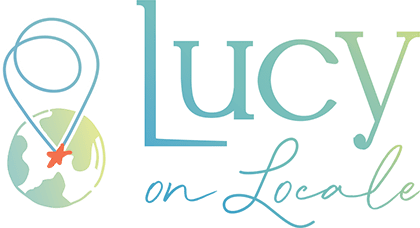
 Photography
Photography Points & Miles
Points & Miles Credit Cards
Credit Cards